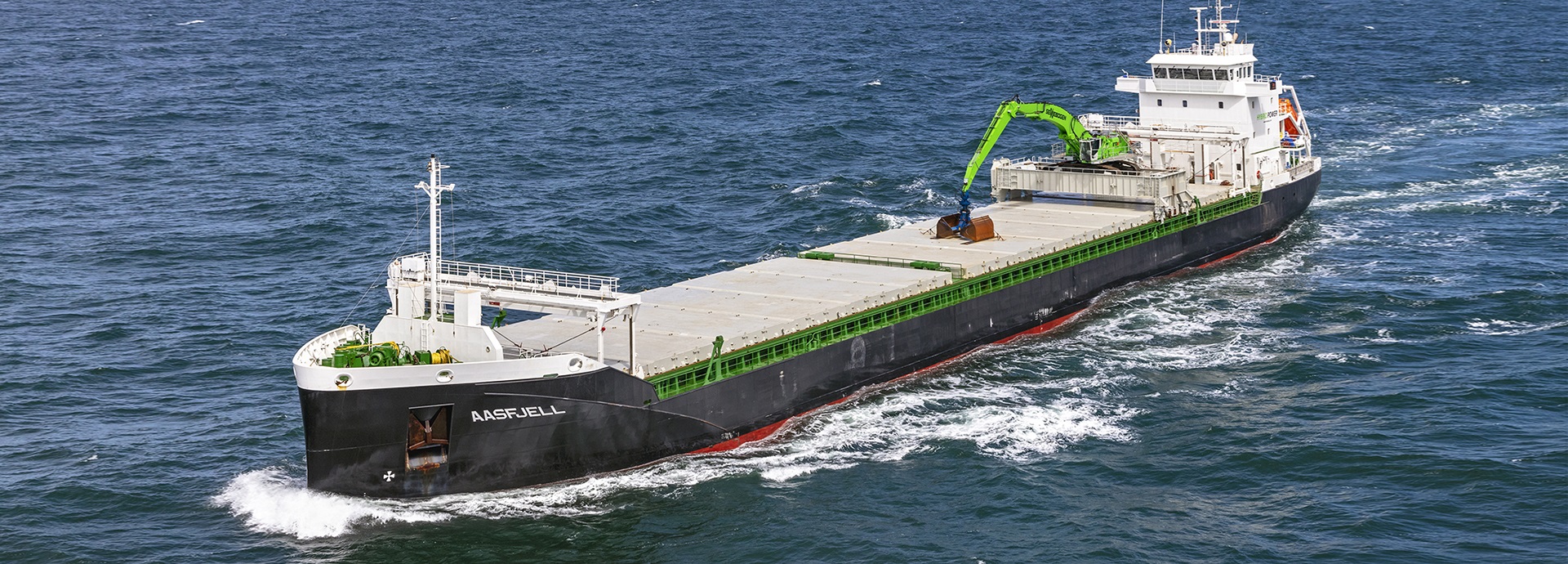

How can you save 50% on fuel and emissions per tonne transported for a bulk carrier?
When Norwegian shipper Aasen decided to build two new self-discharging bulk carriers, they naturally wanted them to be as fuel efficient as possible. Their solution was a fully integrated Wärtsilä HY hybrid system, proven to offer outstanding reliability and performance while cutting fuel consumption and emissions.
For Aasen Shipping, hybrid propulsion with batteries was the obvious route to take to cut fuel use and therefore emissions. Based on the results of a study, Wärtsilä proposed doubling the previously proposed size of the battery pack. The extra cost would be more than covered by the fuel savings that a bigger battery pack would enable.
By combining a Wärtsilä engine with batteries and an intelligent energy management system, the new vessel design would deliver even bigger savings for two newbuild self-discharging bulk carriers – the MV Aasfjell and MV Aasfoss. These would be the first hybrid vessels of their kind in the world. Together, the hybrid system, electrically powered machinery, optimised hull design and additional cargo capacity were projected to cut fuel consumption and emissions by 50% compared to standard self-discharging vessels of a similar size.
An efficient hybrid system delivered as a complete solution
The full scope of the hybrid system for both ships included:
- Wärtsilä 26 main engine
- power take-off/power take-in (PTO/PTI) gearbox and controllable pitch propeller
- DC switchboard,
- battery pack and energy management system.
The hybrid system was delivered as single integrated solution. “Aasen wanted a single supplier and preferred to work with an organisation that has a strong local presence in Norway,” says Sigmund Lidal, Project Manager at Wärtsilä.
Together, the hybrid system, electrically powered machinery, optimised hull design and additional cargo capacity were projected to cut fuel consumption and emissions by 50% compared to standard self-discharging vessels.
The new vessels are significantly more fuel and energy efficient than the company’s existing vessels. This is because the engines can run at optimal load with the batteries absorbing load fluctuations. They can sail in and out of port and manage cargo operations purely on battery power, which eliminates tailpipe emissions. The batteries can also power the onboard excavator used for cargo loading and unloading in port. This reduces fuel consumption and emissions even further because there is no need to use diesel during cargo handling.
The vessels were built at the Royal Bodewes shipyard in the Netherlands. Aasen was able to rely on expert support from Wärtsilä throughout the project planning and delivery.
This was Aasen Shipping’s first ever newbuild project. With the new vessels the company has laid solid foundations for far better environmental performance and operational flexibility.
Want to learn more about how a Wärtsilä HY hybrid solution can reduce your fuel consumption?
Challenge
Build two bulk carriers with optimised fuel efficiency and improved environmental performance.
Solution
A Wärtsilä HY hybrid solution including engine, batteries, propeller and energy management system, as well as an optimised hull design and additional cargo capacity.
Benefit
50% fuel and emissions savings per tonne transported.



